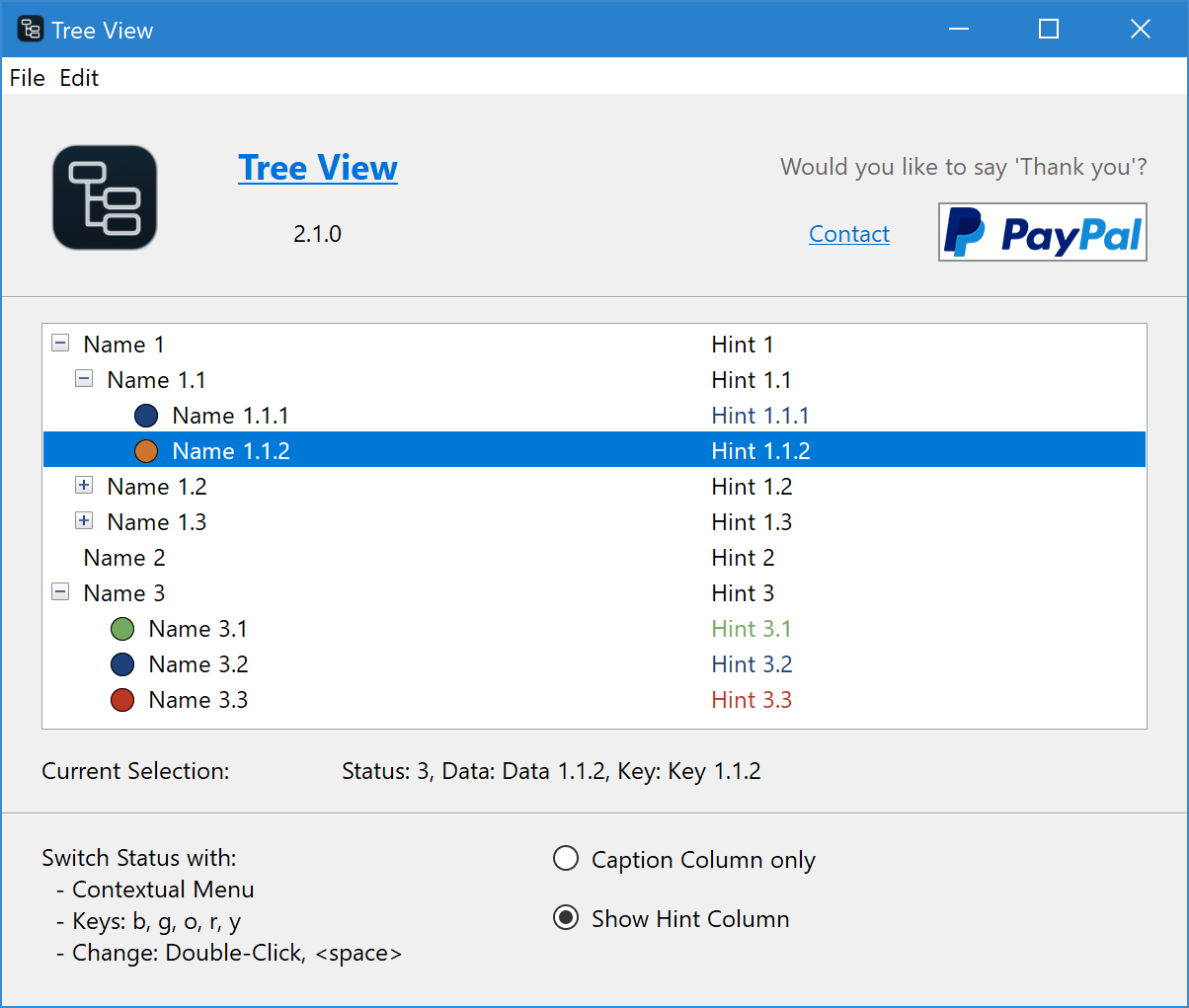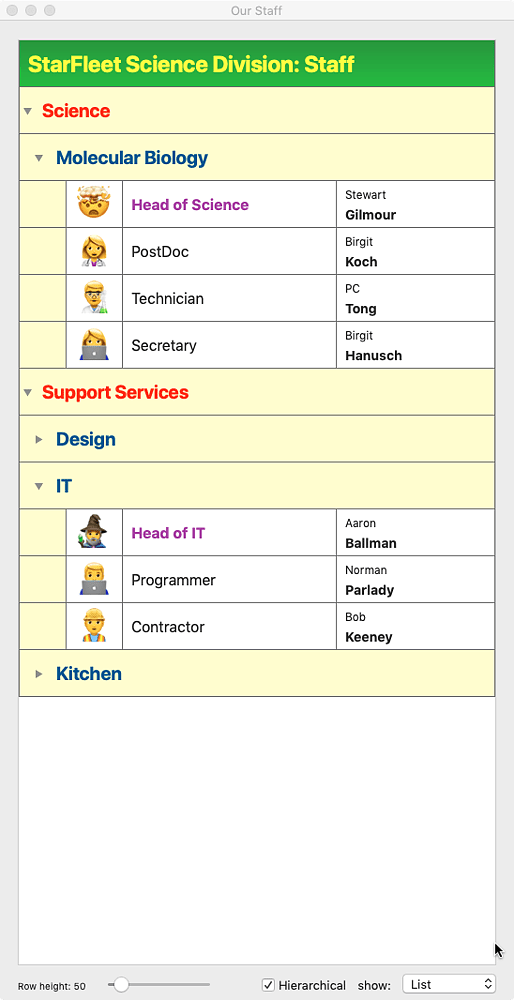


Please purchase the magazine to read the full article. The FolderItem class also gives you the methods to do a lot of file operations without effort. So the real question is: where do you store this data? There are basically two approaches. Xojo gives you the class FolderItem fully loaded with a useful bunch of properties that allow you to examine the attributes of any file for example, the creation or modification of dates, the file path (in several formats), if the file is an alias, etc.
#XOJO HIERARCHICAL LISTBOX CODE#
Your code needs to get that hierarchical data from somewhere and insert rows of data into the Listbox. You have to write code that is executed when the user clicks the disclosure triangle and exposes the contents of the folder. My goal is to have two flow sensors which display the amount of water that flows though each sensor on the screen. (Raspberry Pi) I have a raspberry pi 3 running a program made in Xojo. The sublist is just another instance of a CTreeListedValues list, which will be shown hierarchically in the ListboxOnce youve built your (hierarchical) list, you just assign it to the subclassed Listbox. Xojo detect input from 2 inputs with interrupts. In a hierarchical Listbox, some of the lines are hidden (collapsed), so the Listbox can't store that information. The list entries have several properties available: name, hint, key, status, data, sublist. In a normal Listbox, the list holds the data.

This is an important and complicated subject that I decided would make an excellent topic for Beginner's Corner. Recently a subscriber wrote me with a question about working with hierarchical listboxes. Pane in the lower right portion of the window gives a hierarchical view oft he. He's had fun learning ever since.Īrticle Description: No description available. COLUMN Hierarchical Listboxes (Part 1) Working with hierarchical listboxesĪuthor Bio: Marc taught himself programming in high school when he bought his first computer but had no money for software.


 0 kommentar(er)
0 kommentar(er)
